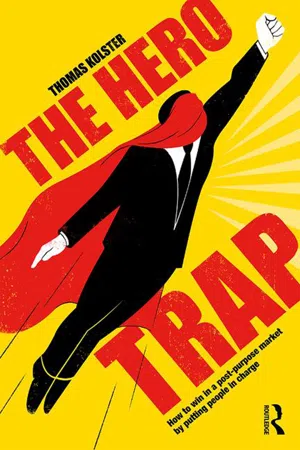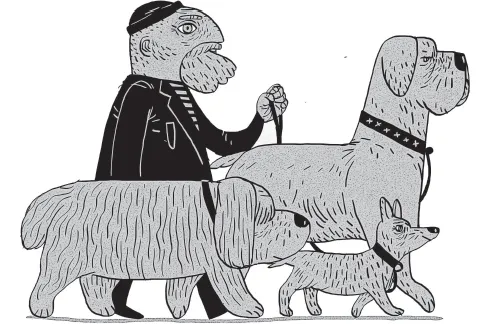For an organisation like IKEA it can be very scary to be open, because what if our customers think that sustainable living is boring or what if they think that IKEA moving into this space is bullshit? And my point was well, if they’re thinking and talking about it anyway, wouldn’t it be better that IKEA be part of that conversation?1
– Joanna Yarrow, Head of Sustainable & Healthy Living, INGKA Group (IKEA)
No CEO is “Uber” the new rules
When power balances shift, revolution or transformation happens. “The power of the people is greater than the people in power!” exclaimed Egyptian Internet activist Wael Ghonim2 during the Arab Spring. This rings especially true today. Everything we know about marketing, business and leadership is changing, as individuals challenge the long-held monopoly on power, storytelling, manufacturing and distribution. No matter what type of communication you work with – journalism, politics or advertising – what you say holds no power in itself. It’s truly about becoming people-first, from how organisations are built to how they behave.
The top-down model has been turned upside down. The era where market shares or opinions were won by domination has come to an end. From shelf space to the commercial bloc to tying customers to phone contracts, the modus operandi of retaining control by hiding important information in the small print or impossible-to-read nutritional facts and stealing people’s precious time by bombarding them with advertising is no more.
Now, one individual can challenge an entire organisation or leader. Take the case of Travis Kalanick, CEO of Uber, a company with a valuation of $60 billion. He was confronted by one of his own Uber drivers during a ride. “People do not trust you anymore,” the driver said, blaming the low-fare prices for practically bankrupting him. Instead of taking the criticism on-board, Kalanick unleashed on the driver: “Some people don’t like to take responsibility for their own shit” and gave him a one-star review.3 The driver recorded the exchange, and it quickly became a public shit-storm, fuelling the already blazing bonfire of Uber’s controversies.
Dinosaurs versus dynamism
He’s not the only one. CEOs from billion-dollar companies are increasingly hitting the headline with apologies to individuals and society at large. Complacency and being stuck in their ways have become real dangers for leaders and organisations. Power, privilege and money are no longer a shield, as Hollywood blockbuster producer Harvey Weinstein – famous for films such as Pulp Fiction, The Crying Game and Shakespeare in Love – experienced when he was confronted with a tirade of sexual harassment allegations. His lawyer termed it “an old dinosaur learning new ways.”4 Perhaps Weinstein should have spent more time in history class – we all know the fate of the dinosaurs.
I share these stories because many organisations are still stuck in the old mass-marketing, mass-production, mass-movement mindset. You can see it on a daily basis, with news organisations struggling to adapt to a new reality where everyone is a content producer. In the United States, Google and Facebook command more revenue than all newspapers combined.5 The marketing industry has become an ignored stalker trying to get out of its imaginary glass cage – your average 12-year-old girl is a savvier marketing machine as she promotes her latest yummy-one-minute-chocolate-chip-cookie on Insta (read: Instagram).
Regrettably, most companies simply don’t get that people aren’t just waiting around to buy their bland, industrialised, generic products. Today, people have choices and can opt for the bakery on the corner that serves freshly baked bread every three hours, rather than purchase a vacuum-packed brick of bread that’ll outlast the Great Wall. Research in 2018 revealed that half of the companies listed on Fortune 500 have declining revenues or declining after-tax profits.6 The big question to ask yourself as an organisation, as the power balance is tipping, is, “What is it you can do for people?”
Everything you can do, I can do (better)
There has never been a time when individuals can do so much, express themselves or showcase their talent (or lack thereof) to the world. Everything has changed – how we as a society communicate with each other, look for love, do our work, start a business. The structure that used to demand big teams, expensive equipment and somebody with a big pay check has crumbled. Now, everybody with a laptop, a phone and a big chunk of passion can be her own moviemaker (iMovie), music studio (Songtrust), craft shop (Etsy), hotel owner (Airbnb), taxi company (Uber), coffee store (Wheelys), teacher (Skillshare), cleaning company (Handy) or whatever floats her boat. The market no longer belongs to the big brand household names but to José, Christine Raj, and the many other talented people out there.
Organisations are failing because they lose focus of what’s important. They are narrowly focused on growth – winning market shares or customer acquisitions – rather than on developing, evolving and thinking, “How is our organisation meaningful to people’s lives?” Innovation from big companies seems to be at a standstill as anyone can come up with an innovative approach. Ideas are cheap. Hey, ideas often happen in the shower or when you’re doing nothing – how’s that for cheap?! Couple that with the fact that today, there’s almost nothing you can’t do yourself as the cost of putting ideas into action plummets. For big companies with unwieldy, costly and often bureaucratic departments, the challenge is real across the whole marketing spectrum – from research and development to positioning to marketing and distribution. How is your organisation adjusting its marketing mix or brand to cope with a people-powered marketplace?
Hey, who’s telling this story?!
With business becoming everybody’s business, there’s increasing pressure to cut through the noise of conversation and communication. The business of storytelling is a very gratifying business, whether it’s a Hollywood script, a piece of investigative journalism or a 30-second commercial. As always, it’s about the narrative, the good story. But, like the teenage girl retaking selfies until it’s pose-perfect, we have all become storytellers trying to amplify the right story about ourselves to the world. It’s critical to be aware of this: the monopoly of storytelling is challenged when everybody armed with a smartphone can spread a good story that contests the social, cultural or economic elite at lightning speed. This surge in quantity and quality of content undeniably reveals real gold nuggets that stand up to the power elites, such as the #MeToo movement in 2017, rightfully dubbed the most influential communication campaign of that year. Or the resounding call for climate action from the young Swedish girl Greta Thunberg, who in March 2019 inspired more than 1.4 million students across the world to go on strike under the banner “School strike for climate.”
Trust is at risk. According to an Edelman Trust Barometer in 2019,7 61% of people say that “a person like them” is a credible source of information, compared to only 47% who would say they trust a CEO. Even the power elites seem to circumvent the traditional media channels and opt for social media or whistleblower sites when they have an agenda that goes against the institutions, with no better (or worse) an example than the US President Donald Trump. One man or woman with a phone is like David’s staff and sling, ready to take on Goliath – be that a company, organisation or government.
People worry about surveillance, companies misusing data, states spying on their own citizens and Big Brother watching. For every one government, spy or company, we the people, in our millions and billions, are the ones watching these institutions. Every time the state or a company crosses the line of its authority or commits any other wrongdoing, there’s a concerned citizen with a phone – from the Taksim Square to Ferguson protests and rallies; from #blacklivesmatter to #chapulling (Prime Minister Erdogan’s use of the word çapulcu, meaning “looter,” to describe demonstrators was adapted to “chapul” meaning “fighting for one’s rights”).
As an organisation, you can’t treat people as a target group or the next customer in line. You have to converse with them like people, peers, friends. Their voice equals your voice. Their Twitter update equals your Twitter update. And in many instances, their voice(s) might even outdo your best efforts! When people are the megaphone amplifying or decrying your efforts as a leader or an organisation, how can you keep them aligned with your communication? We’re entering a new era of communication, where it’s not about what you say but about how you can enable others to sing your praises.
Important lesson in parenting and marketing
“It’s like you’re always stuck in second gear. When it hasn’t been your day, your week, your month, or even your year.” I’m sure that feeling sometimes overruns you, with everything around you changing so fast. No, the quote is not by the oft cited Mark Twain, it’s the Friends theme tune, “I’ll Be There for You” by the Rembrandts – you have most likely clapped to it at some time in your life. Growing up in Denmark in the 1980s and 1990s, I, like many families around the world, watched American-bought TV shows such as Seinfeld and Friends. It was the Golden Age of TV, unbeaten in at least a decade, according to a Nielsen measurement of Top 20 most watched TV episodes.8 The Seinfeld series finale in 1998 is still the most recent episode to reach the Top 100. That is testament to a change in the very notion of mass-communication.
With the world becoming flatter, as Thomas Friedman proclaimed in his 2005 The World is Flat,9 digitalisation and globalisation are bringing us closer together as one big village. Internet memes – today’s version of small town gossip – travel around the world in a couple of hours. At the same time, it is tearing us further apart. As one screen becomes many, the Internet has fragmented mass-media as one-to-many becomes many-to-many and individuals move from being consumers to creators.
In his essay “Death to the Mass,”10 Jeff Jarvis sets out the challenge to any organisation stuck in a “mass” mindset: “What has died is the mass-media business model – injuring, perhaps mortally, a host of institutions it symbiotically supported: publishing, broadc...


